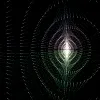BBS Signatures Using Weil Pairings
Oct 02, 2023

Retired PhD engineer/physicist Particle beam weapons, radar for cows, elliptic curve crypto, seeing via tongue for blind

Retired PhD engineer/physicist Particle beam weapons, radar for cows, elliptic curve crypto, seeing via tongue for blind